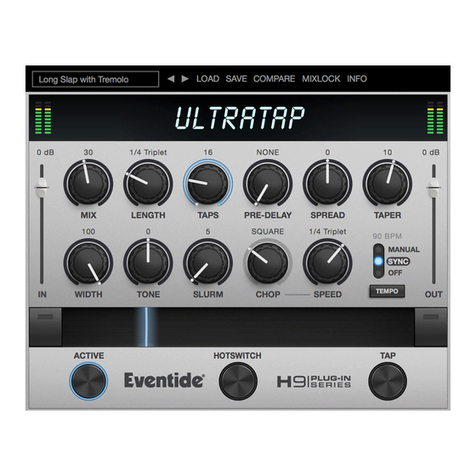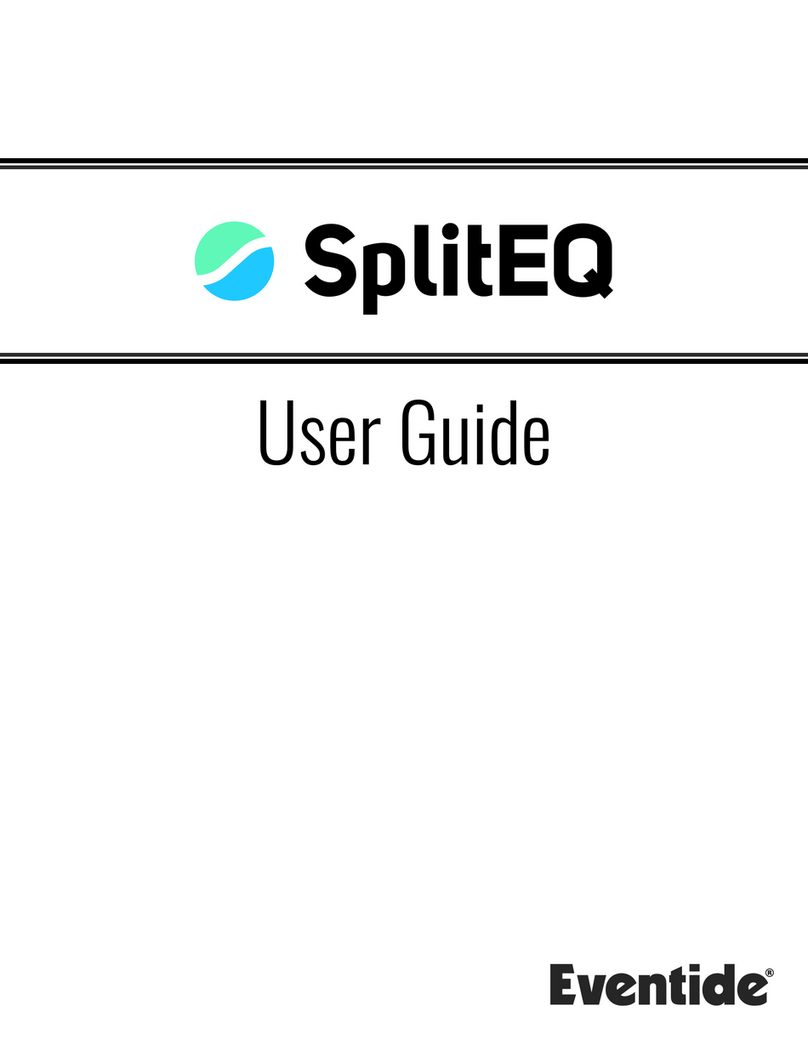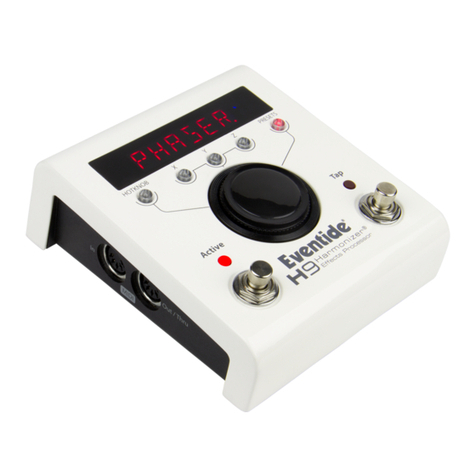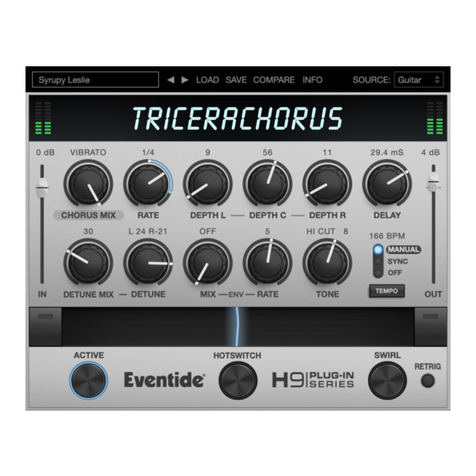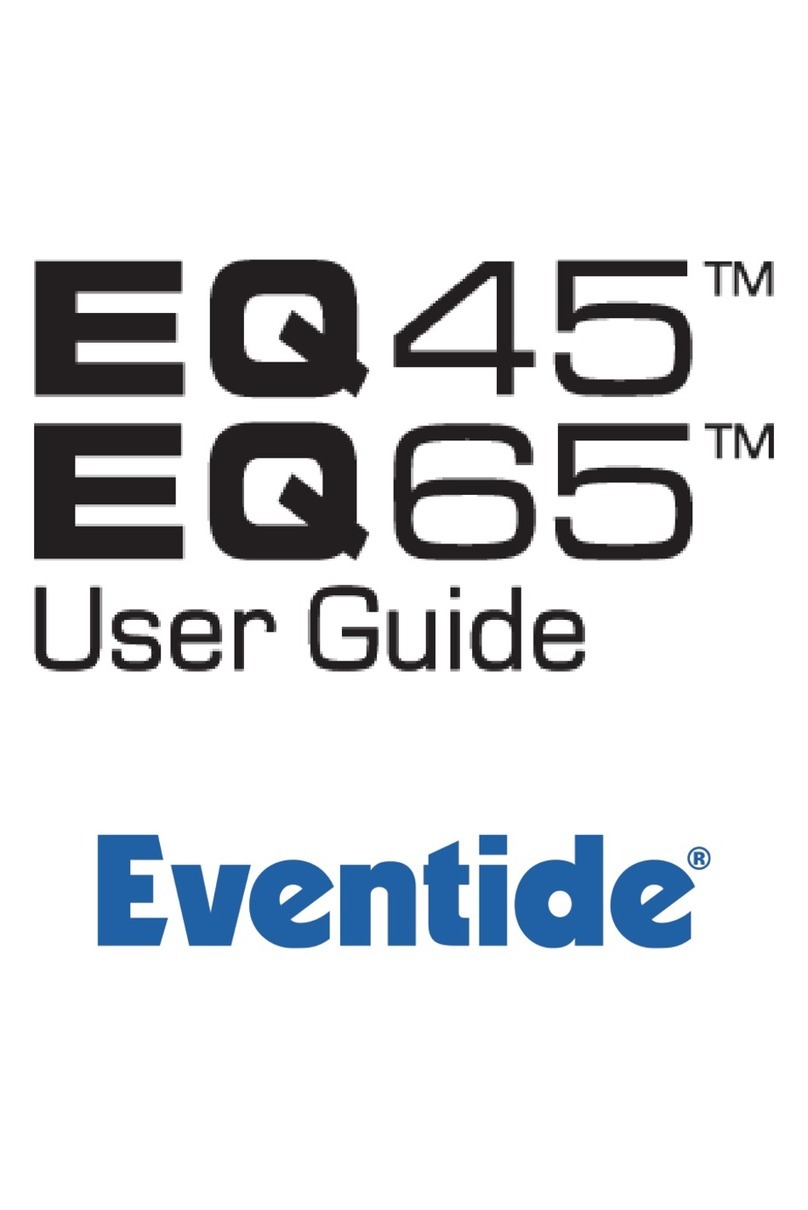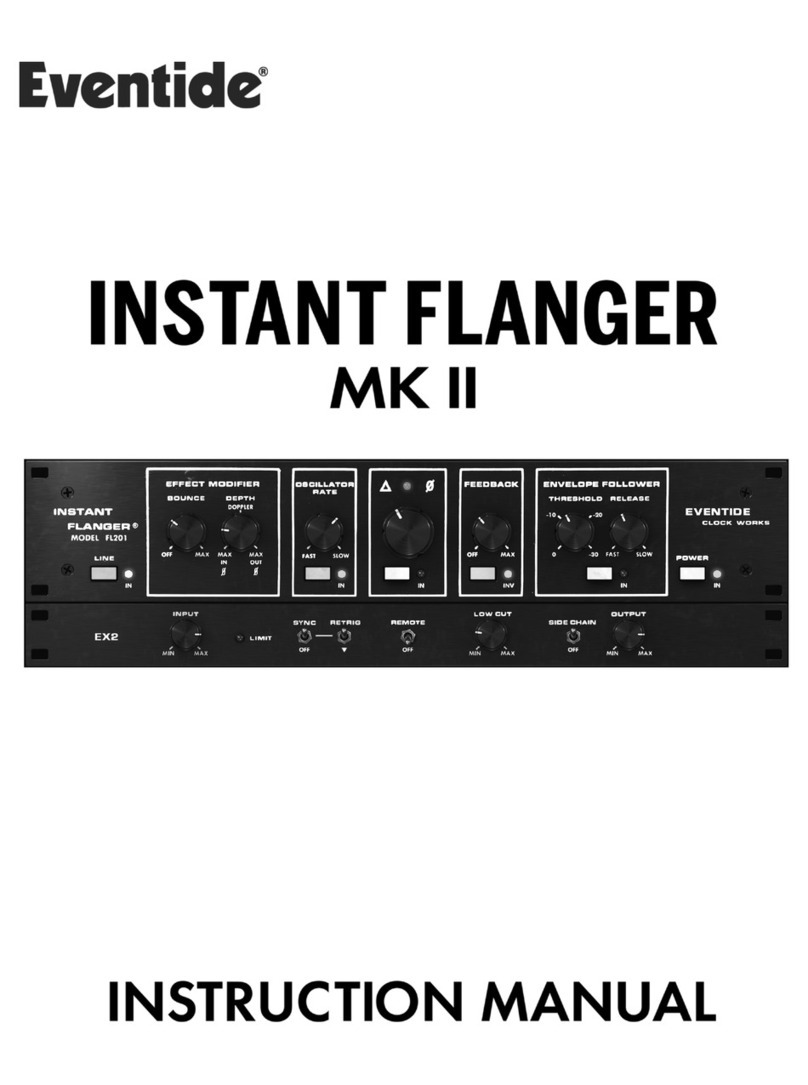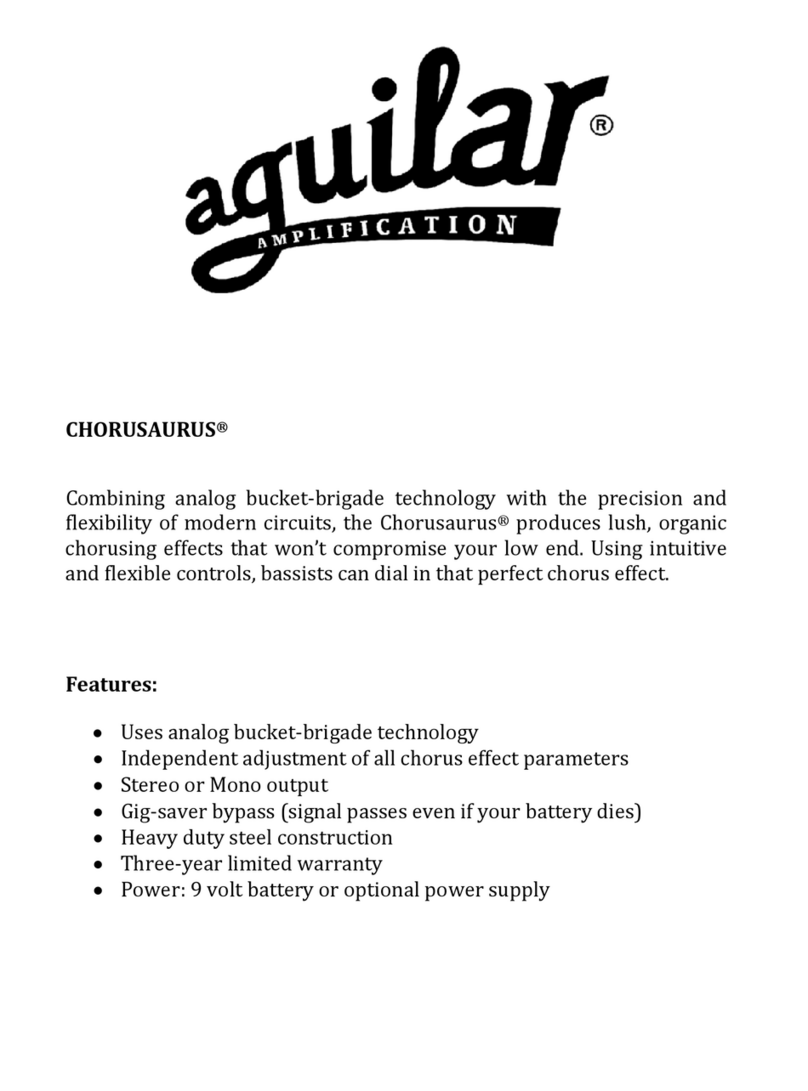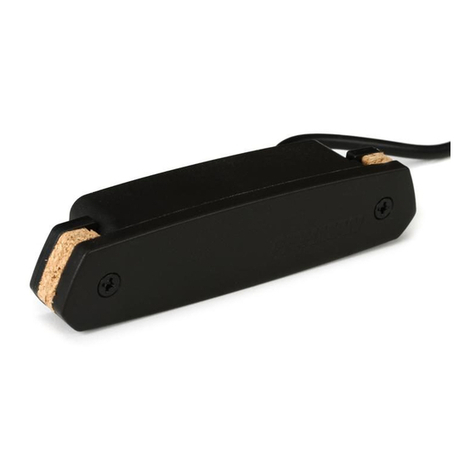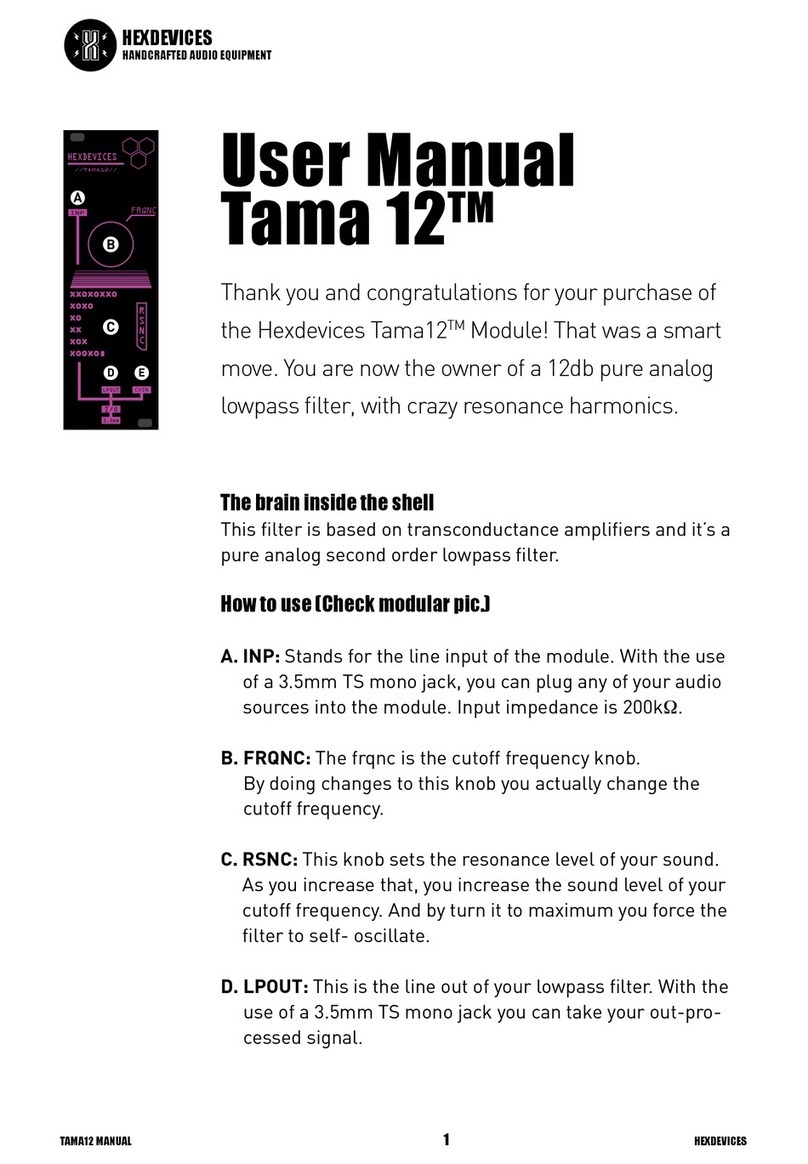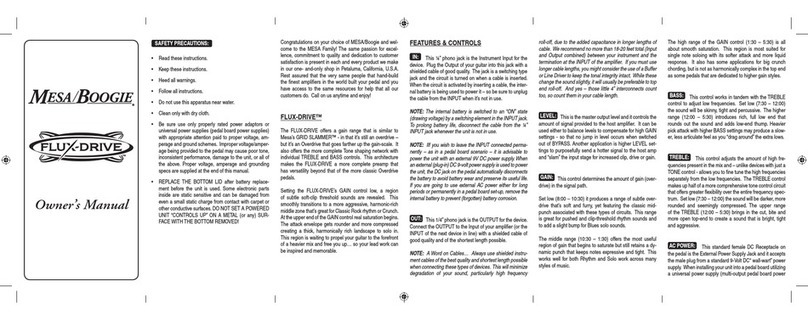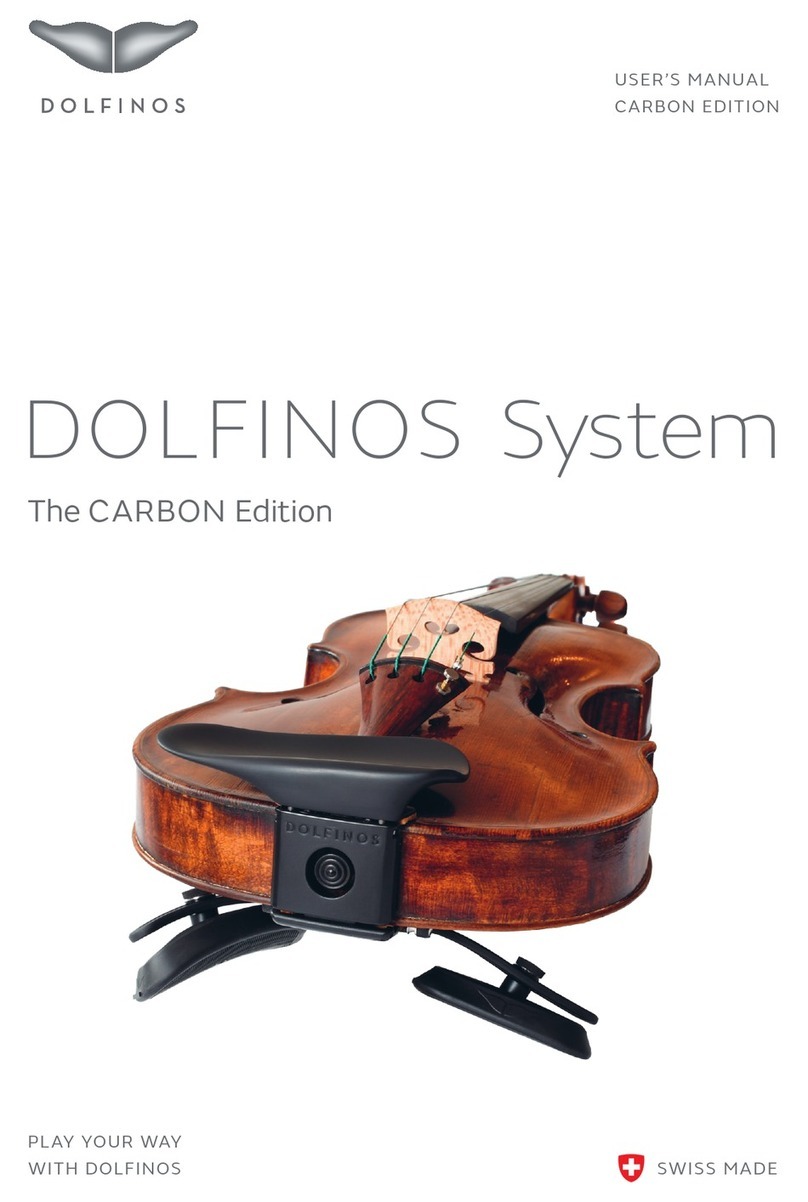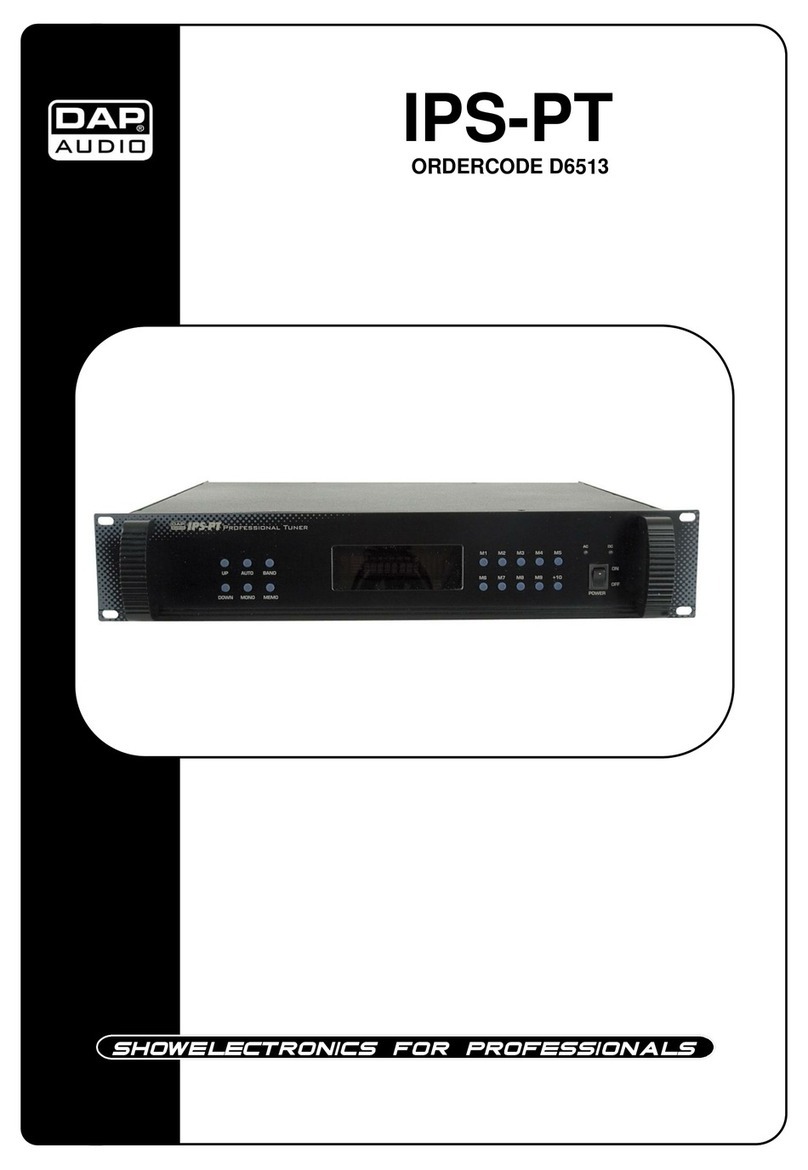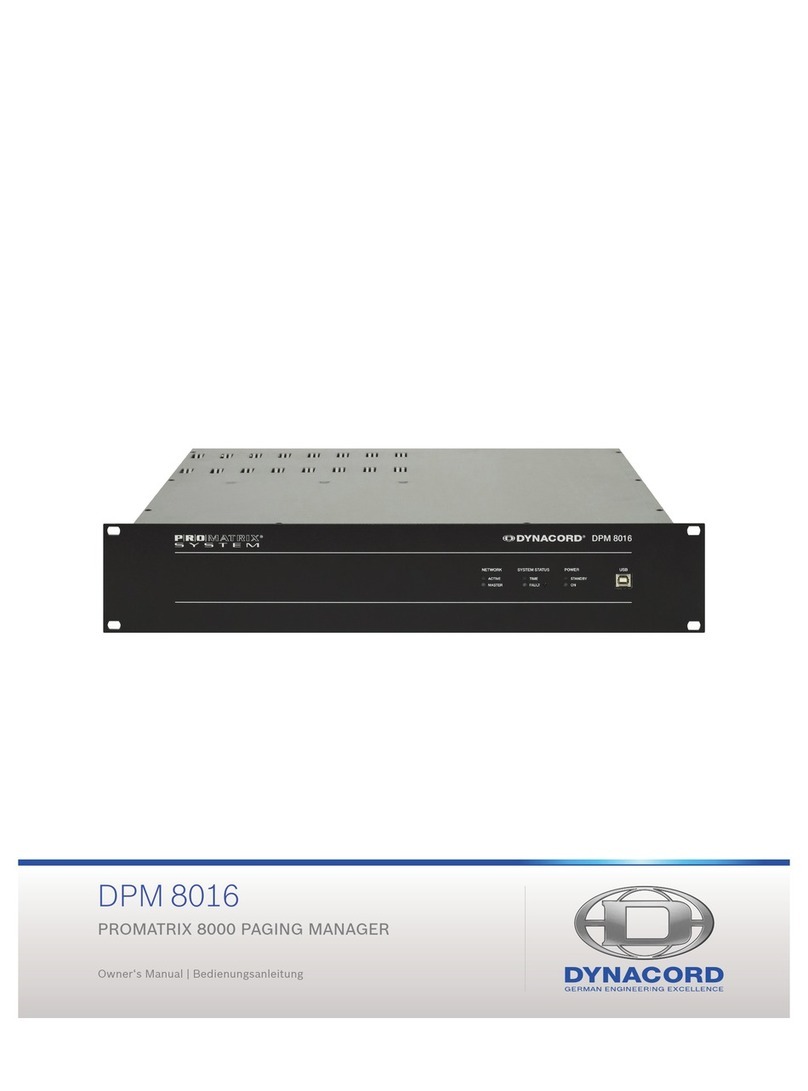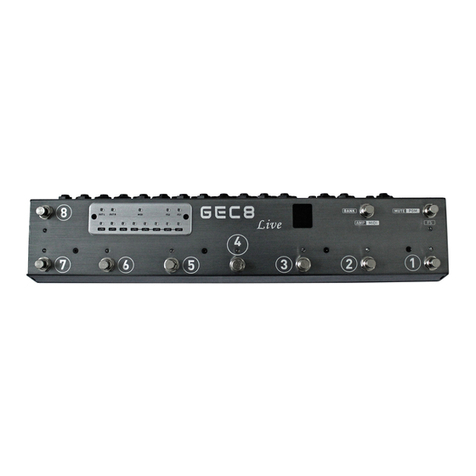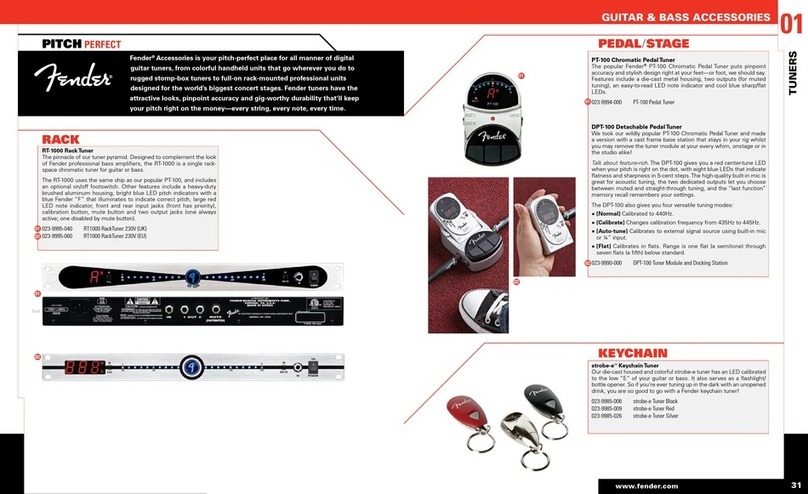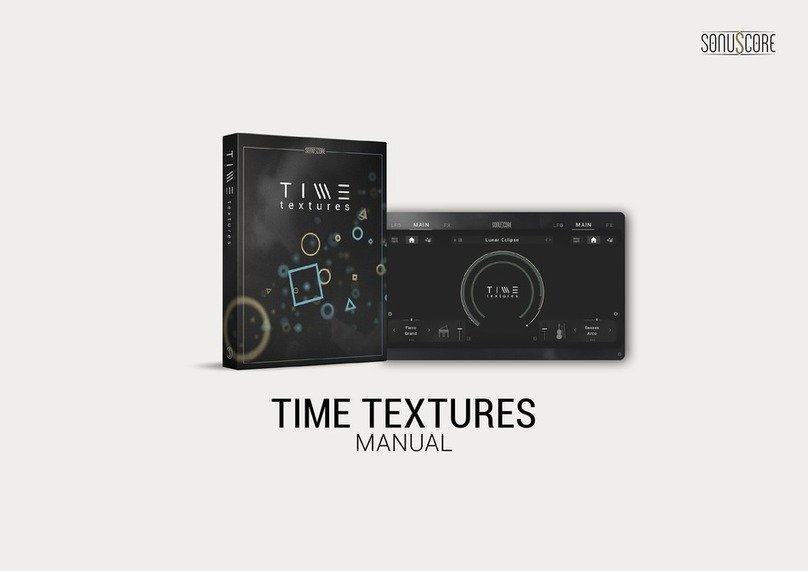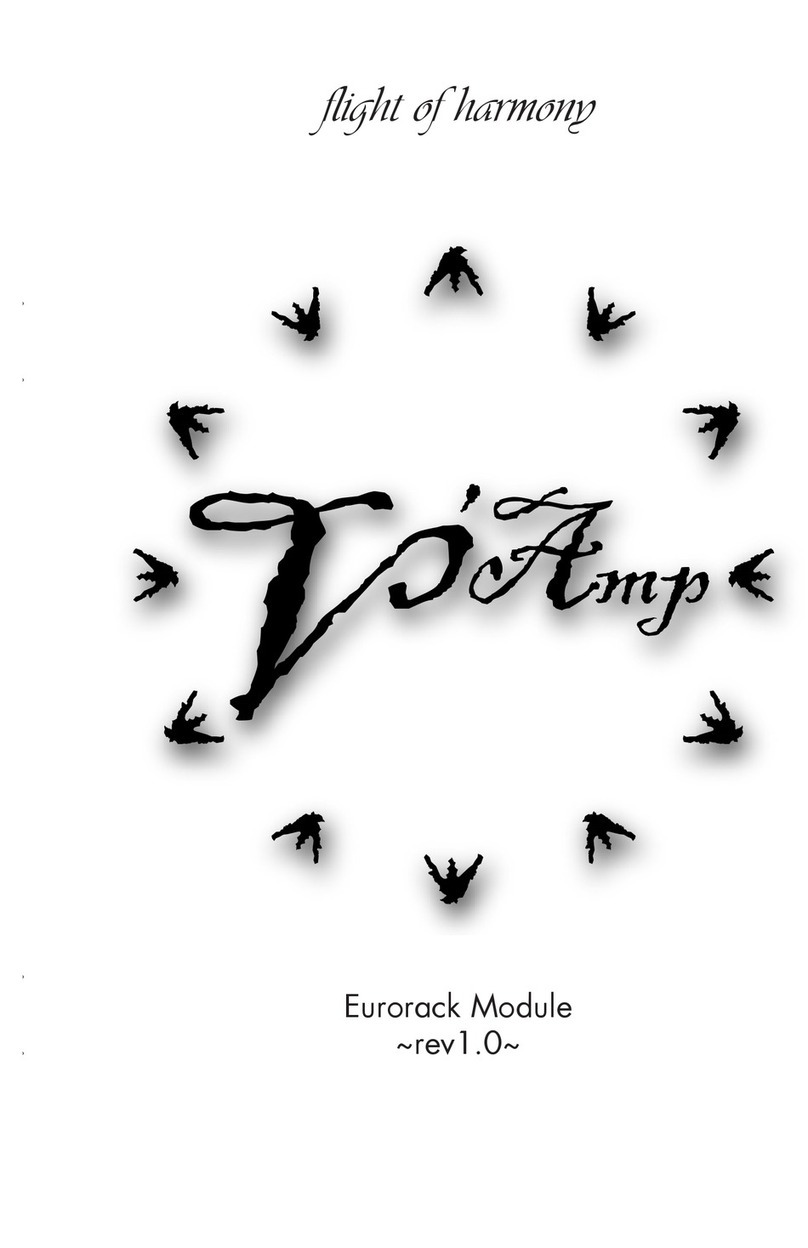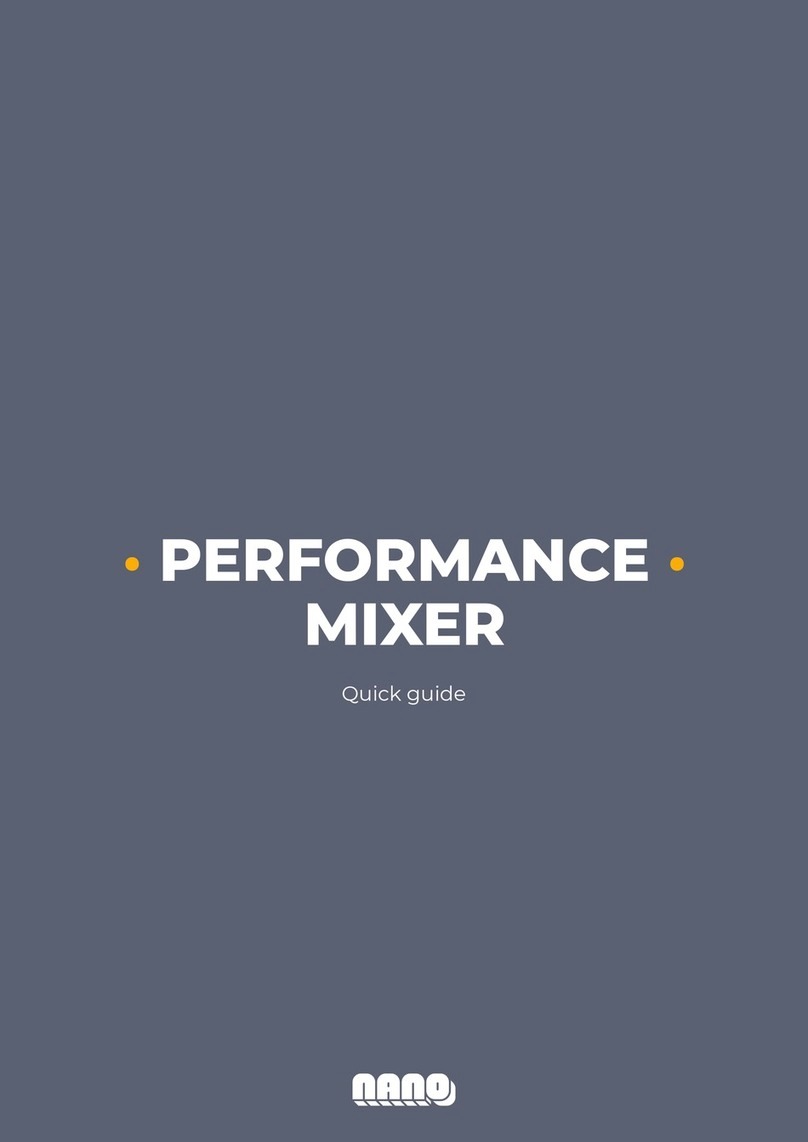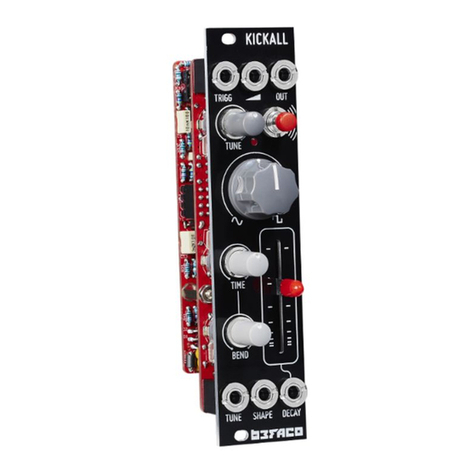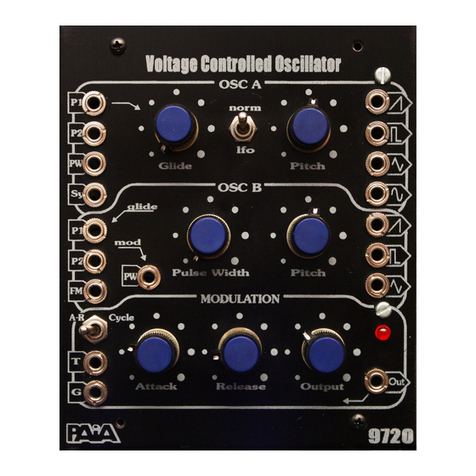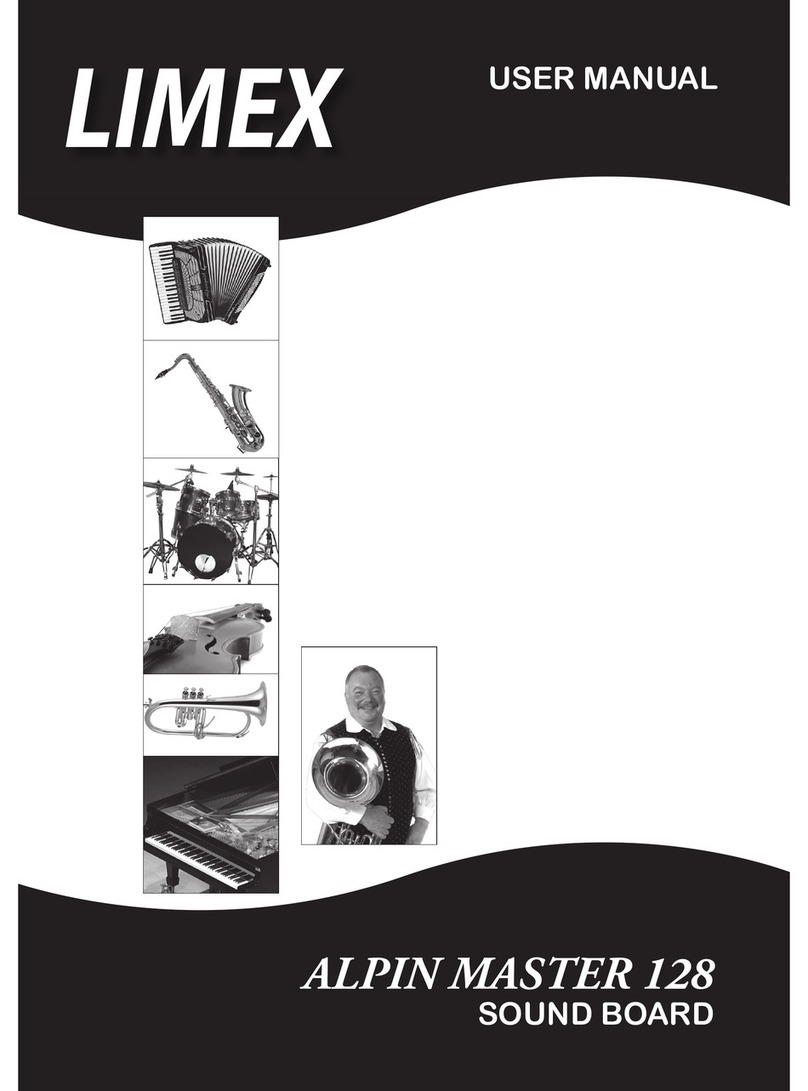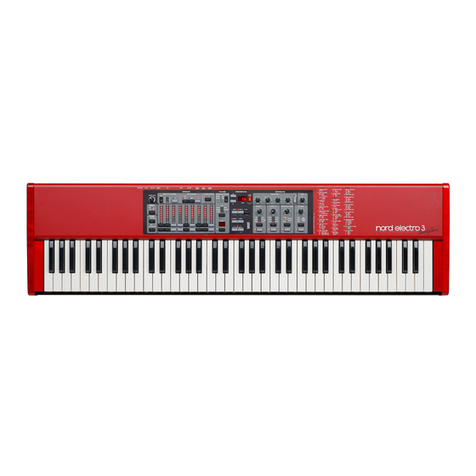Eventide Harmonizer H910 User manual

eventideaudio.com

eventideaudio.com
Original Marketing Material circa 1976

Model H910 Harmonizer®
eventideaudio.com
3
Introduction
The H910 Harmonizer was pro audio’s first digital audio effects unit. The ability to manipulate time, pitch and feedback
with just a few knobs and switches made it easy to alter audio in ways that otherwise required at least a couple of tape
machines and, often, rearranging furniture. Suddenly anyone could be Les Paul (recording engineer not guitar player).
The H910’s electronics were primitive and the processing almost entirely analog. The digital bits of the design did “as little
as necessary.” Only delay was digital. Everything else - filtering, feedback, mixing, pitch modulation, etc. - was analog.
And it sounded it.
The H910 was also just a tiny bit unstable. And it showed. In a time long before CDs, MIDI, or any standards for sample
rate or bits, Light Emitting Diodes (LEDs) had just become “the latest, greatest thing” and the H910’s iconic, flickering
display was the first ‘digital readout’ to appear in many studios. And that flickering readout belied a secret – the H910 was
inherently ‘jittery’. The H910’s master clock wasn’t crystal-based but, instead, it was a tuned LC (inductor/capacitor)
oscillator. The result is that the system was not locked to a specific frequency and the entire system’s clocking would drift
slightly, slowly and unpredictably. In fact, all of the oscillators in the H910 are of the ‘free-running’ sort and this
randomness adds to the sound (and the fun).
The H910 was groundbreaking when introduced and now the circuitry, the functionality and the ‘sonic behavior’ of the
original has been modeled in software and is available in your DAW for the first time. Note that while presets are a good
starting point, you’ll get the most out of the H910 if you push buttons and turn knobs - just as you would when searching for
a sound using the hardware. That was always, and is now, once again, the fun of it.
Genesis of the H910
Prior to 1970 there were no digital audio products of any kind, in any studio, anywhere. The first digital audio product to
appear was a one-trick-pony, the DDL (Digital Delay Line). First introduced in 1971, DDLs from Eventide and Lexicon
were as simple as simple can be - audio goes in now and comes out a bit later. Eventide’s 1745, was a big, costly box full of
shift registers with a front panel dominated by big ‘wafer’ switches. Designed in 1972, during the very early days of ICs
(Integrated Circuits), the only chips with enough memory (storage) to be dangerous/useful were 1K bit shift registers.
RAMs were expensive and teeny. Each 1kbit shift register could delay audio by ~2 mS, so that, by filling a box with ‘only’
100 of these chips an amazing 200 mS of delay became possible!
Studios bought Eventide’s 1745 to use as a pre-delay for a plate reverb or for ADT (automatic double tracking). Eventide’s
audio design sounded ‘good enough’ to satisfy even the most critical ears (some early digital audio products sounded awful)
thanks, in large part, to Eventide’s custom designed ADC (analog to digital converter). And so, fueled by the sales of a
handful of 1745s, Eventide took the next step and developed the successor to the 1745, the 1745M. The 1745M was also a
simple DDL but it was modular DDL and used RAM instead of shift registers making fine control of delay possible for the
first time. And it had 7 segment numerical LED readouts! The introduction of a “pitch change” module for the 1745M set
the stage for the development of the H910. By 1974, most of the pieces needed to design a “Harmonizer” were in place.
The Rack Mount H910
The H910 was conceived as a box that a vocalist might use to create real-time harmonies and reverb. In fact, the prototype
sported a keyboard for selecting musical pitch intervals. (An optional keyboard controller was offered in production.) Much
of the H910’s analog circuitry is borrowed from the DDLs. RAM storage was used for delay. By giving the user real time,
interactive control of pitch, delay and feedback, the H910 ushered in the digital effects era and became a key instrument
allowing engineers and producers to shape sounds in new ways. In a pre-software world, the H910 achieved its
groundbreaking effects through the judicious application of analog circuitry, custom converters, and digital logic gates.
The H910 Plug-in
This plug-in models the hardware to the best of our ability. It even emulates the randomness of the hardware (not that you
can copy ‘random’ with any degree of exactitude). The controls have the same range and characteristics as the front panel
controls of the hardware. The pitch change splicing method is the same as the hardware’s – the glitch is back!
We’ve done exhaustive listening tests and compared it to the best relics that we could find. This plug-in models the
quirkiness of one vintage H910. In fact, we’ve tweaked the plug-in to sound as close to the ‘golden’ relic as possible. (If this
plugin sounds different from your H910, you may want to get your hardware adjusted.)

Model H910 Harmonizer®
eventideaudio.com
4
H910 Controls
The H910 user interface consists of two parts. The top half of the interface is the front panel of the
original H910 2U rack mount unit. All controls function in the same way as the original. The bottom
half of the interface enables features originally available through external connections or options.
Front Panel Controls:
LINE button: This control switches the Harmonizer in and out of an audio circuit. When the switch is in
the OUT position, the unit is completely bypassed but the algorithm is still running in the background.
This allows you to store audio in the feedback patch and modify its contents using the pitch controls,
then to hear these differences when you revert to LINE IN.
INPUT LEVEL knob and LIMIT indicator: This control varies the level of the audio input to the
Harmonizer. Users of the original hardware would always be tweaking this pot! The plug-in models the
hardware analog input audio circuitry of the H910 and, let’s just say that, the level of the input audio
will change the effect of the other parameters, especially when making use of the feedback control. We
recommend that you play with this parameter and listen.

Model H910 Harmonizer®
eventideaudio.com
5
Input Level should be adjusted to take advantage of the maximum dynamic range of the digital and
analog circuitry by setting the control as far clockwise as possible before excessive distortion becomes
apparent on the output signal.
The LIMIT indicator is used as an aid in setting the INPUT LEVEL control. It is adjusted to give a
brief flash each time the maximum dynamic range is even momentarily exceeded.
NOTE:
Because the LIMIT indicator is peak responding, and because of the characteristics of the internal
signal processing circuitry, it is desirable for the indicator to flash occasionally during normal
operation.
The amount of flashing is strongly dependent upon the nature of the input signal. As an aid to the
operator, a general guide is provided:
SIGNAL SOURCE
LIMIT INDICATOR DUTY CYCLE
Integrated program (radio)
once per two seconds
Integrated program (live)
once per second
Voice (talking)
once per two seconds
Piano
2-3 per second
Guitar, acoustic
2 per second
Guitar, fuzz
1 per second
Synthesizer
infrequent
Organ
infrequent
Drums
once per beat
Remember, the above is a general guideline! The ear is the best measuring instrument around, and the
best setting is one at which the output level is maximum and distortion is not yet evident.
Additionally right clicking on the INPUT knob will turn it to - dB, muting the input. Right clicking
again will toggle the INPUT knob back to its previous value.
Other manuals for Harmonizer H910
5
Other Eventide Music Equipment manuals
